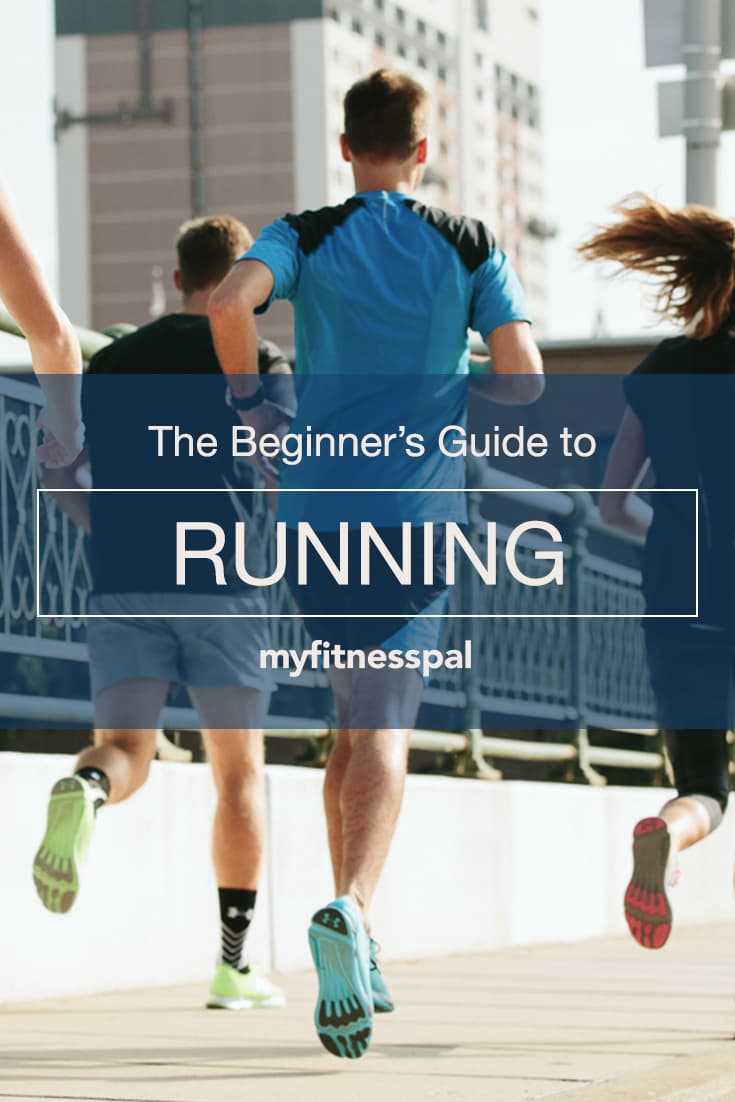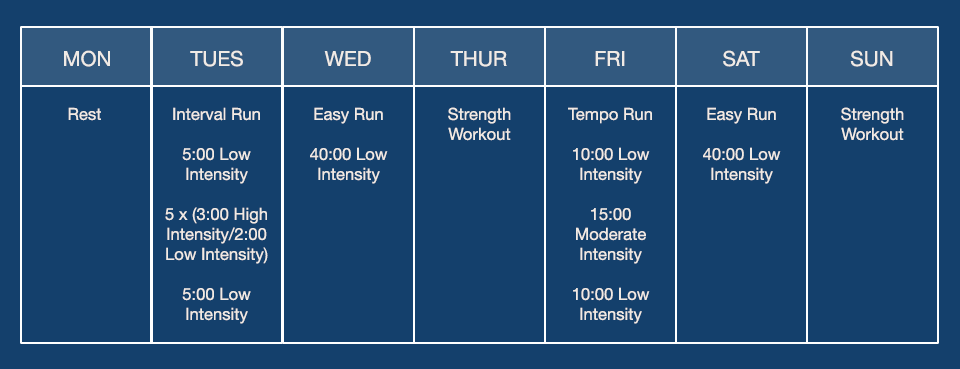In a recent online survey, American adults were asked to name their preferred form of exercise. The winner, coming in just ahead of weight lifting, was running.
It’s not hard to understand why. Running is convenient, requiring little more than a pair of shoes and a safe road or trail. It’s also simple—something almost anyone can do on his or her own without hiring a trainer or watching instructional videos. Running is extremely beneficial, as well, proven to shed body fat, increase cardiovascular fitness, extend life and reduce the risk of a long list of chronic diseases, including heart disease and diabetes. And to top it all off, running is enjoyable—or at least, it can be once you’ve acquired a taste for it. In an annual survey conducted by Running USA, two-thirds of the respondents who classified themselves as experienced runners named “having fun” as one of their main motivations for continuing to run.
The goal of every new runner is—or should be—to become an experienced runner with no intention of ever quitting. After all, that’s the only way to continue reaping the activity’s many benefits. Your chances of arriving at that point will be much greater if you get off to a good start, avoiding some of the common mistakes that turn beginning runners into former runners. Here we’ll address some of the questions that new runners most often ask and need answered to get off to a good start in America’s favorite form of exercise:
The one necessary piece of gear for running is a good pair of running shoes. No single type of shoe is right for every runner. Buying the right model for you will enable you to run more comfortably and reduce your risk of developing an overuse injury such as shin splints.
The best way to find the right shoe for you is to shop at a running specialty store staffed by knowledgeable salespeople with lots of experience in matching individual runners with shoes. Try on a few models, and select the pair that feels most comfortable to run in. Research indicates that comfort is the best indicator that a given shoe is a good match for an individual runner.
Speaking of comfort, although you can run in almost any exercise clothes, you may feel most comfortable in socks, shorts, tops and (if needed) outer layers designed specifically for running. These products may also be found at running specialty stores.
As for technology, a stopwatch is a useful tool for monitoring the duration of workouts. If you prefer to run by distance or to monitor this variable alongside time, purchase a GPS watch. Alternatively, use the stopwatch that’s built into your smartphone or use a tracking app.
As a high-impact activity, running has the potential to cause impact-related overuse injuries such as plantar fasciitis (inflammation in the heel). The risk of injury is greatest for beginners, whose muscles, bones and joints have not yet adapted to the stress of repetitive impact. A recent study reported that more than 1 in 10 new runners suffered an injury while participating in a 6-week “Start to Run” program.
The best way to minimize your risk of getting hurt is to ease gently into running. Begin with workouts that mix walking with running. Gradually lengthen the running segments until you are comfortable running the whole way through the workout. For example, you might alternate 1-minute walking segments with 1-minute running segments in your first week, then move to 2-minute running segments in week 2 and 3-minute running segments in week 3 before removing the 1-minute walking segments entirely.
This approach will allow the tissues of your lower extremities to gradually adapt to the stress of repetitive impact, making them stronger and more resilient. At the same time, it will gradually elevate your aerobic fitness level to the point where running is as comfortable as walking was initially.
Whether your goal is to lose weight, improve your health or participate in races, you will get the best results from your running program if you exercise more or less daily. But this doesn’t mean you have to run every day. In fact, in the early stages, you should run only every other day. This level of frequency will give your muscles, bones and joints time to recover fully and adapt between runs. On nonrunning days, do some other form of aerobic exercise, such as using an elliptical trainer, or work on strength and mobility through an activity like yoga or weight lifting.
Once you’re comfortable running every other day, you may choose to increase your running frequency by replacing nonrunning workouts with runs or gradually work toward running every day. Neither option is inherently better than the other. If you enjoy running a lot more than other forms of exercise, work toward daily running. If you enjoy variety in your exercise program or wish to minimize wear and tear on your legs, continue to run every other day and do nonimpact exercise on alternate days.
As a general rule, the farther you run each time you lace up your trainers, the more results you’ll get. But the returns are diminishing, with each added mile providing less benefit than the last. So a sensible approach is to gradually increase the average distance of your runs until you are getting the results you desire, and then hold steady thereafter.
If your goal is to maximize your general health, you might aim for the World Health Organization’s standard of 150 minutes of vigorous aerobic exercise per week. You can hit that mark with 5 half-hour runs. (Note that the WHO recommends 2 full-body strength workouts per week in addition to aerobic exercise.)
If your goal is to lose weight, consider aiming instead for a calorie target. Some men and women who run for weight loss try to burn 500 calories on a typical run because it’s a nice round number and because, done consistently, it’s enough to yield substantial weight loss over time. The average person burns .85 calories per pound he or she weighs per mile. To figure out how far you need to run to burn 500 calories, multiply your weight by .85 and divide 500 by the result. For reference, the average person who weighs 150 pounds needs to run just under 4 miles to burn 500 calories.
If your goal is to participate in races, how far you run should be influenced by the distance of the event you’re preparing for and by the specific nature of your goal. Naturally, if you’re getting ready for a marathon, you need to run farther than if you’re prepping for a 5K. If your goal is to place in your age division, you need to run farther than if your goal is just to finish. But rather than try to figure it out for yourself, follow a training plan designed by a trusted running authority for those of your experience and fitness level.
The results you get from your running program are affected not only by how much you run (i.e., how often and how far) but also by how fast you run. Exercise scientists actually prefer to speak of intensity rather than speed because it is the relative intensity of running (i.e., percentage of maximum heart rate or breathing rate) that determines its effects on the individual runner, not the absolute speed (i.e., minutes per mile or mph). For example, a beginner might find herself at an intensity of 75% of maximum heart rate at a pace of 11 minutes per mile, while an experienced competitive runner might have to run 7 minutes per mile to hit the same intensity, but the benefits for both runners will be the same.
So what is the most effective running intensity? Trick question! Different intensities offer different and complementary benefits. The most effective running programs include a variety of intensities. Specifically, research has shown that a program in which 80% of total running time is spent at low intensity (60–75% of maximum heart rate) and the remaining 20% at moderate (80–90%) and high intensity (>90%) produces the best results.
Different formats work best for workouts targeting low, moderate and high intensity. Low-intensity workouts are done at a steady, easy pace. Moderate-intensity workouts usually take the form of tempo runs, where a block of moderate-intensity running is sandwiched between a low-intensity warm-up and a gentle cooldown. High-intensity runs are structured as intervals, where multiple, short segments of high-intensity running are separated by low-intensity recovery periods.
Below is an example of 1 week of training that conforms to the “80/20 Rule.” Note that strength workouts and other nonaerobic workouts don’t count toward the intensity balance.
Heart rate is not the only way to monitor intensity. Many runners use pace, and there are several tools available that help runners target appropriate paces for various workout types given their current fitness level. You can also use perceived effort, which is a subjective rating of how hard running feels generally in a given moment. On a 1–10 scale of perceived effort, low intensity corresponds to ratings of 1–4, moderate intensity is 5–6, and high intensity is 7–10.
In addition to increasing your running volume gradually and wearing the right shoes for you, there are a couple of other measures you can take to reduce your risk of developing an overuse injury.
One is strength training. Weakness in particular muscles is known to contribute to some common injuries in runners. For example, weak hip abductors are often seen in runners with knee pain. Doing a couple of full-body strength workouts per week will shore up such weak links. Avoid traditional bodybuilding exercises, such as biceps curls, and focus on movements that target important stabilizing muscles, like the hip abductors, and functional movements that replicate elements of the running stride, such as walking lunges.
Another way to prevent injuries is to listen to your body. Inevitably, you will develop sore spots as your running program progresses. When a sore spot is highly localized in a particular area and becomes increasingly uncomfortable as you continue to run, stop. In the ensuing days, stay fit through nonimpact activities that you’re able to do pain-free. When you’re ready, do a test run. If the sore spot is gone, cautiously resume your running program. This aggressive way of responding to “red flags” in your body will not prevent sore spots from appearing, but it will keep them from becoming much bigger problems.
In the past, runners were taught to drink as much as possible during every workout to prevent dehydration and its consequences, particularly heat illness. Nowadays, experts advise runners to drink only during runs that are long or intense enough to generate significant thirst—and to drink only as much as they are thirsty for during these workouts. The new guidelines are based on research showing that drinking more than one is thirsty for while running does not improve performance or body temperature regulation (compared to drinking by thirst), while it does greatly increase the risk of gastrointestinal discomfort.
Water is sufficient on most runs. In workouts that are long or intense enough to leave you more than moderately fatigued, a sports drink containing carbohydrate and electrolyte minerals will give you an extra boost. In races lasting longer than about 1 hour, use the sports drink offered at official aid stations to maximize your performance.
As simple as running is, there is no limit to the amount you can learn about it. I’ve been running for more than 30 years, and I am still learning things that help me train more effectively and enjoy the activity more. But the information I’ve shared here covers just about everything you really need to know to get off to a good start. And by getting off to a good start, you’ll maximize the chances that you’re still doing it, and enjoying it, many years from now.













